HITESH MEHTA: HM Design and Landscape Architecture Without Borders (LAWB)
Hitesh Mehta is one of the world’s leading authorities, practitioners and researchers on sustainable tourism, ecotourism physical planning and both the landscape architectural and architectural aspects of ecolodges. In 2015, he was therecipient of United Nations (UNEP/ GFHS) “Outstanding Achievement Award” for his work with alleviating poverty and protecting sensitive ecosystems. In July 2006, National Geographic identified Mr. Mehta as one of five Sustainable Tourism Pioneers in the world. Fellow of both the American Society of Landscape Architects (ASLA) and the Architectural Association of Kenya (AAK).
What is the role of landscape design when facing global challenges such as climate change and natural disasters? How does your firm, HM Design, help mitigate these threats?
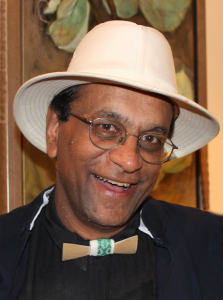
Photography: Salvador Tan.
Considering that building construction and energy use during manufacture and transportation of building materials account for more than 30 percent of worldwide greenhouse gas emissions (UN Intergovernmental Panel on Climate Change, 2007), landscape architects have a significant role to play both in adapting landscapes from the effects of global warming but also by mitigating, or designing against, the causes of greenhouse gases.
In this age of extreme weather events, our profession is uniquely qualified to process and synthesize complex challenges that yield sustainable, world-changing solutions.
By making a few landscape design and material-choice changes, Landscape Architects can create considerable reductions in the overall carbon footprint of a project. Because of their all-round skills, landscape architects are crucial players in helping mitigate natural disasters (such as earthquakes, flooding, fire, drought, landslides, tsunamis, etcetera) as well as in the physical planning required during recovery efforts. Several Landscape Architects eg. Japan are already serving in natural disaster recovery efforts and many of our colleagues have been directly affected by these natural disasters.
However, the Landscape Architecture profession is still not well-utilized as regards natural disasters and we need to improve awareness of decision makers and aid agencies as to the capacities of landscape architects.
For the past fifteen-years, my office’s (HM Design) projects around the world are mitigating the threat of climate change by investing in long-term environmental, economic, social and spiritual sustainability while protecting infrastructural assets and housing of local communities.
Our work has helped improve Human Settlements, promote Ecological Restoration and Low- Carbon Development and the Social Economic Benefit gained to the local communities. We have specialized in working with indigenous communities and ensuring that their settlements are enriched and the fauna are protected from the money received through Sustainable Tourism. For example, we have helped protect the largest peatland in Africa (Nyungwe Forest), we have promoted the planting of millions of acres of native forest; green roofs and use drought- tolerant native plant species.
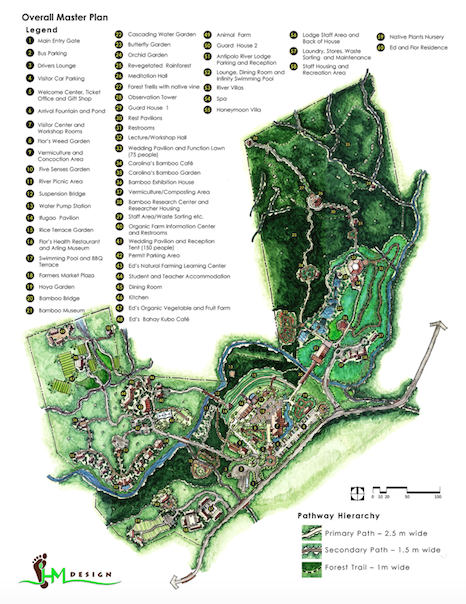
One of the main proposals for the Antipolo Botanical Gardens, Organic Farm and Lodge Master Plan in Philippines is to bring back the native montane forests that used to exist on the property and thereby help with both carbon sequestration and erosion control. Master Plan: HM Design.
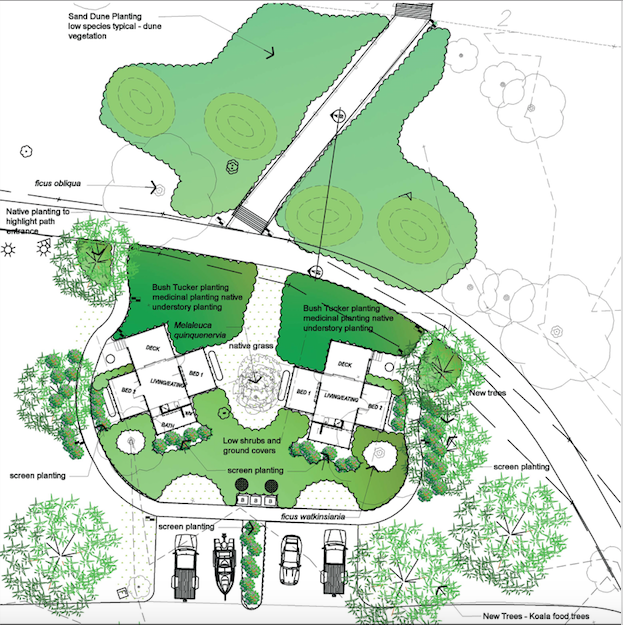
For the Amity Eco-Shacks, HM Design designed the landscape using a native species plant palette that included Aboriginal Bush- Tucker foods as well as food sources for the critically endangered koalas. Plan: HM Design.
What kind of voluntary (LAWB like) projects have HM Design consulted-on and currently working on?
HM Design has provided voluntary Landscape Architectural services in forty-five countries in the world spanning all six continents.
For over twenty years, I have disseminated knowledge through projects, books, research papers, teachings, international conference presentations, and eco-landscape design and planning workshops. My firm HM Design has worked/working with indigenous communities in five continents and helping to improve their settlements and alleviate poverty. Below are a few examples of our recent/current voluntary work:
ABORIGINAL COMMUNITIES IN AUSTRALIA
For the past three years, HM Design has provided pro-bono ‘additional’ master planning and landscape design services to eight different aboriginal communities in Australia: Quandamooka in Queensland, Worimi and Tharawal in New South Wales; Yolngu, Gagudju, Arrernte in Northern Territory, and Adnyamathanha and Pitjantjatjara Anangu, South Australia.
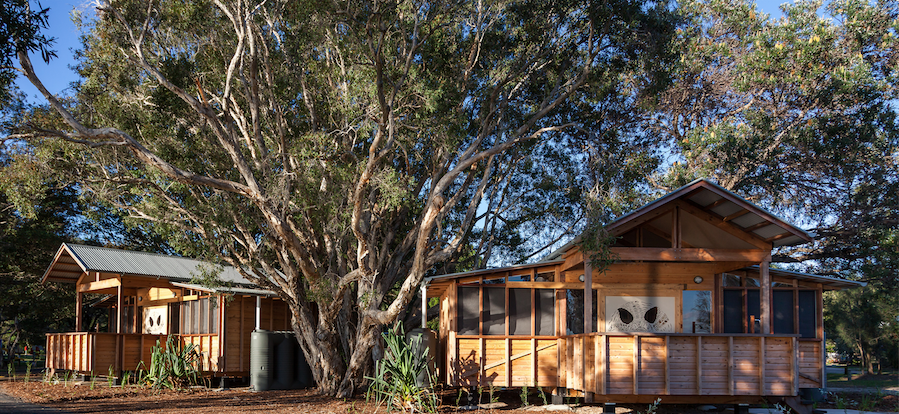
Amity Eco-Shacks, Stratford Island, Australia. HM Design was responsible for all services from Conceptual Planning to Construction Supervision. These award-winning project, which is wholly owned by the Quandamooka Aboriginal peoples, opened to the public in August 2015. Photography: Hitesh Mehta.
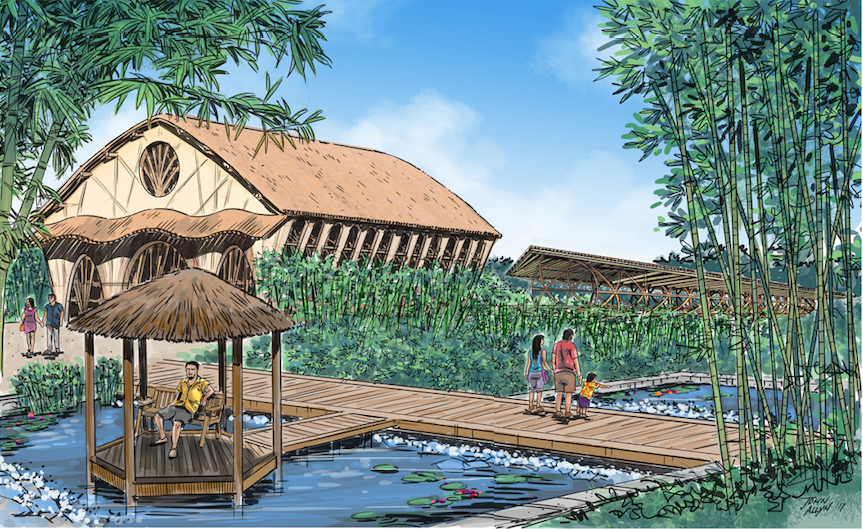
The Bamboo and Cascading Pools section is one of the main components of the Botanical Gardens. This area also acts a carbon sink by sequestering carbon dioxide from the atmosphere and converting the carbon into plant fiber. The Buildings and Bridge are also made from Bamboo, thus becoming a carbon capture and storage system. Illustration: HM Design.
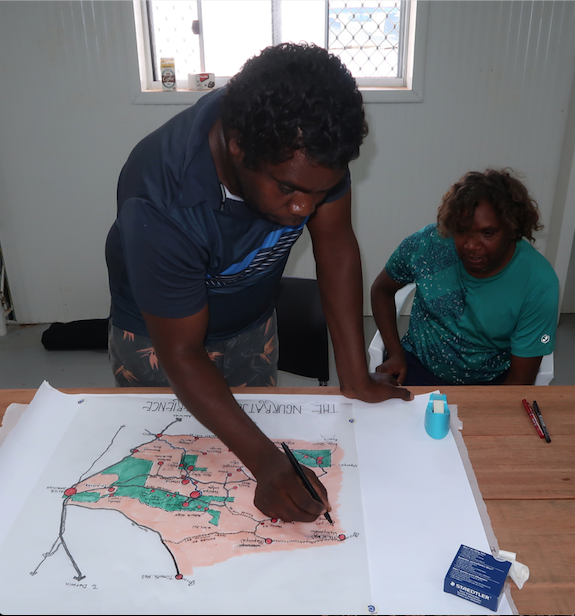
Arrente Aboriginal men providing their wise input during the preparation of a one-of -a-kind Destination Sustainable Tourism Plan (The Ngurratjuta Experience) for the Red Center area of Central Australia. Photography: Hitesh Mehta.
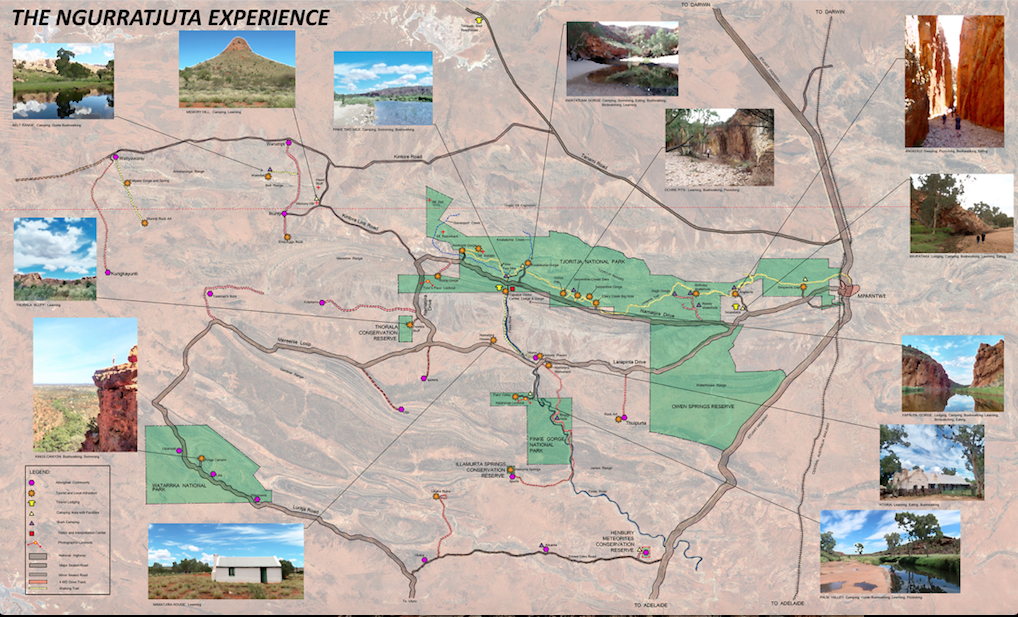
The Ngurratjuta Experience Destination Plan is a first in the history of Australia to have been created by Aboriginal peoples and with majority of the names of towns and places in aboriginal language. Master Plan: HM Design.
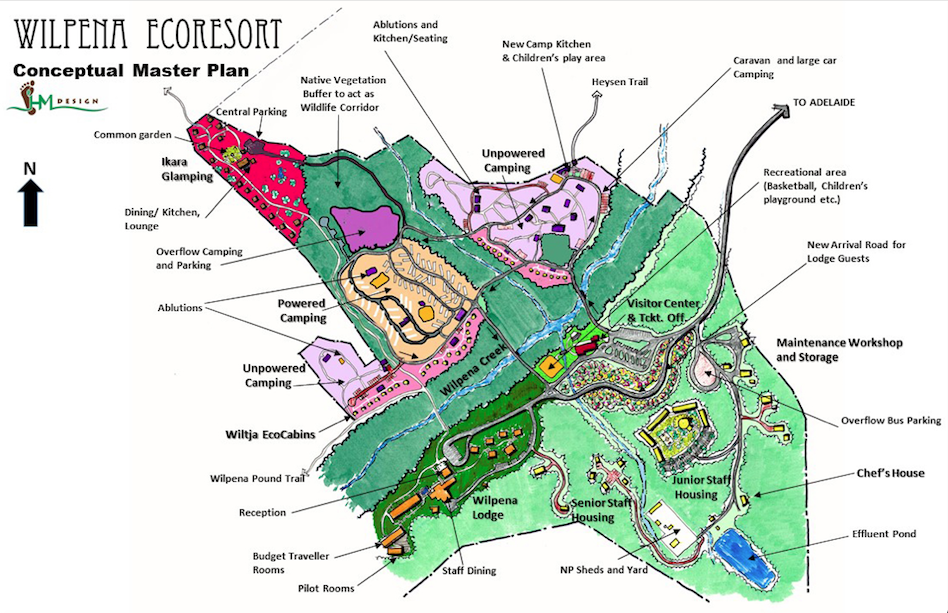
Wilpena Resort and Camping Master Plan, Wilpena Pound, South Australia. HM Design was the landscape architect for the creation of an Overall Master Plan for an existing Resort and Camping area in one of the most significant aboriginal landscapes in Australia – Wilpena Sound. Master Plan: HM Design.
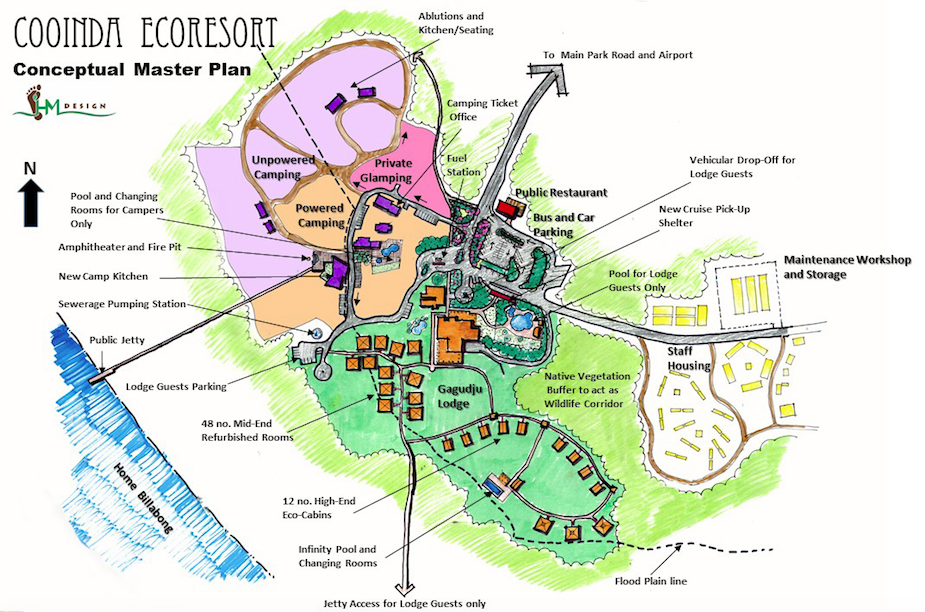
Cooinda EcoResort Master Plan, Kakadu National Park, Australia. HM Design performed an environmental planning and market demands audit on the existing facilities and was the landscape architect for the preparation of a Preliminary Master Plan for the indigenous-owned Gagudju Cooinda Lodge which is the gateway to Yellow Water Billabong in the heart of Kakadu National Park. Master Plan: HM Design.
CITY PARK WORKSHOP IN NAIROBI
HM Design is currently providing pro-bono Master Planning services to Friends of City Park, a grassroots organization in Nairobi. HM Design is preparing a Conceptual Master Plan for one of the most iconic and historical urban parks in Nairobi – City Park. I conducted a public stakeholder workshop and participatory charette to ensure that all voices were heard and included in the Master Plan.

Hitesh Mehta with stakeholders at a Physical Planning workshop to create a Master Plan for City Park, Nairobi. Photography: Nilesh Shah.
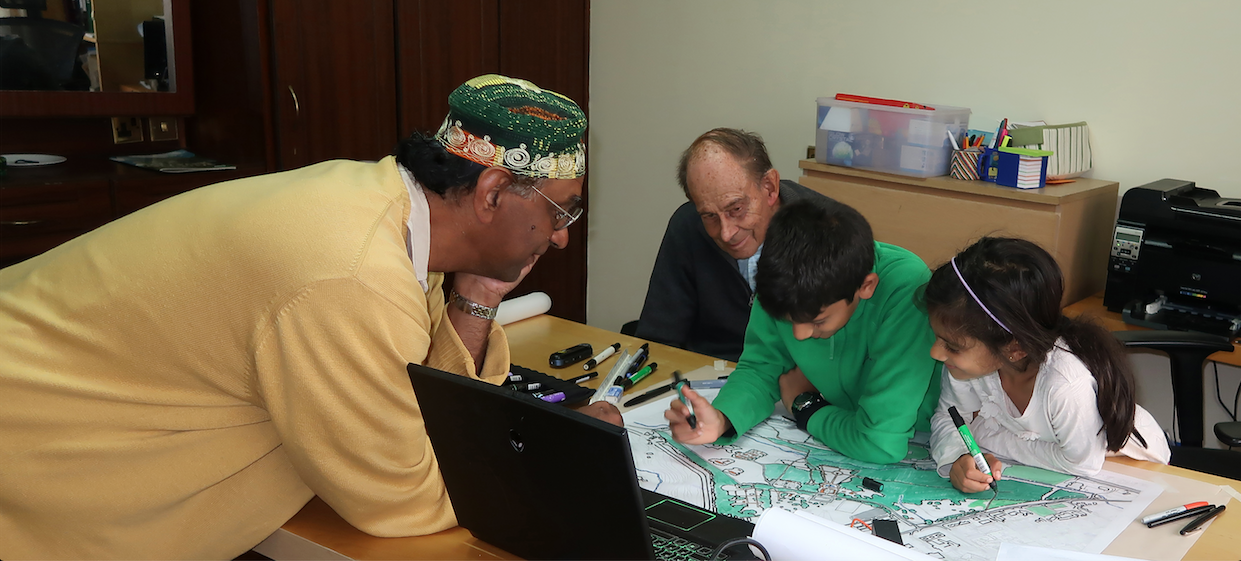
HM conducting a participatory City Park Master Plan charette with children. Photography: Seeta Shah.
CONSULTANCIES TO ECOLODGES AROUND THE WORLD
Providing free on-the-site landscape architectural consultancies to authentic ecolodges all round the world. In the past year, I gave voluntary advice to ecolodges in South Africa, Botswana, Namibia, Zimbabwe, Mozambique, Kenya, Zambia, Guatemala and Trinidad. And I will be providing consultancy to an ecolodge in Finland in September.
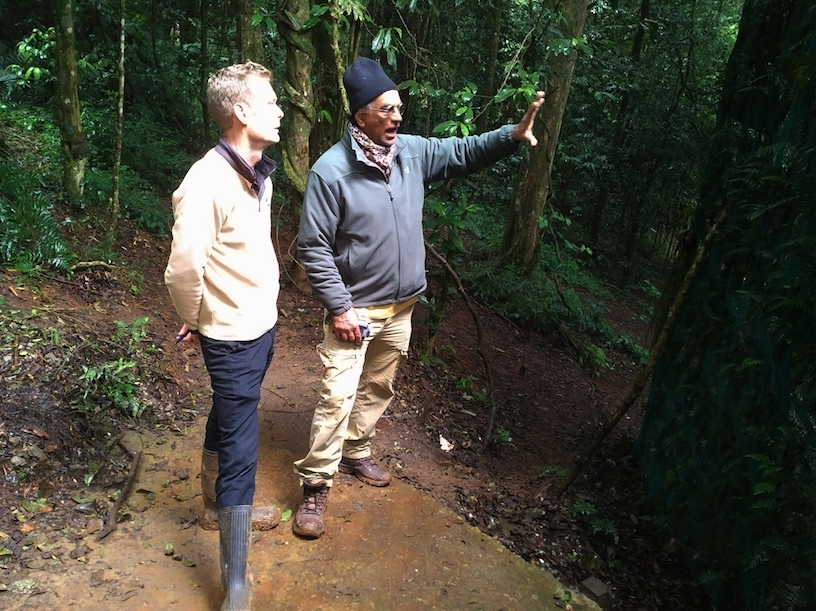
HM providing an on the site pro-bono consultancy for an ecolodge in Kenya. Photography: Mwangi.
How does LAWB cooperate with national and international NGO’s and local governments?
The LAWB Working Group has MOU’s signed with Engineers without Borders and Architecture Sans Frontières International (ASF), and we are members of Global Shelter Cluster (GSC) which is an Inter- Agency Standing Committee (IASC) co-chaired by UNHCR and IFRC (RedCross). It is our intention to build working relationships with UNDP, UNHABITAT and UN Adaptation and Disaster Reduction Group in Canada.
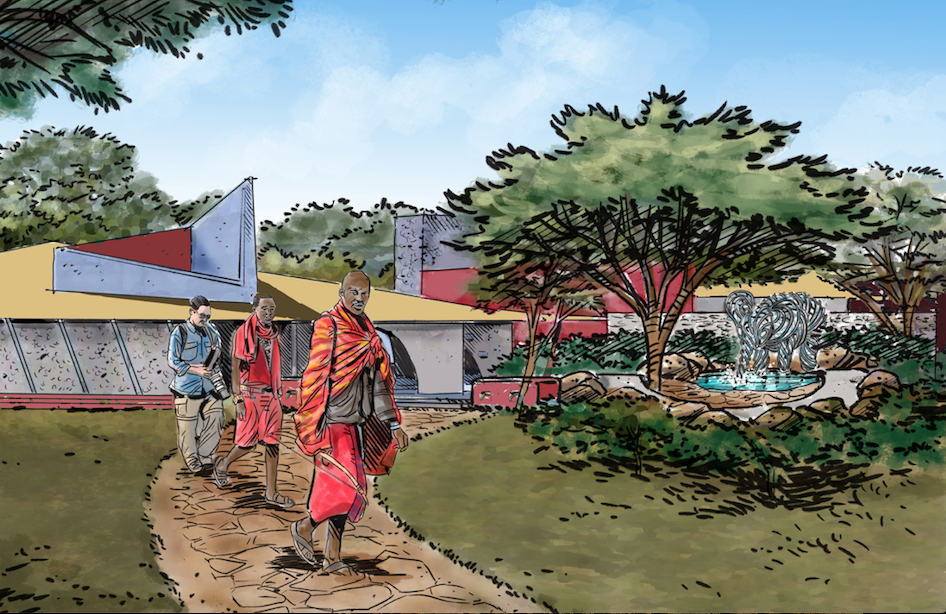
HM Design regularly works with marginalized communities and designs with social justice as a priority. Above is the Arrival Garden illustration of an ecolodge in Kenya which is 100% owned by the local Maasai community. Illustration: HM Design.

Conceptual Master Plan of Amity Point Campsite, in Australia. Illustration: HM Design.
Full article in our 03 printed edition.








